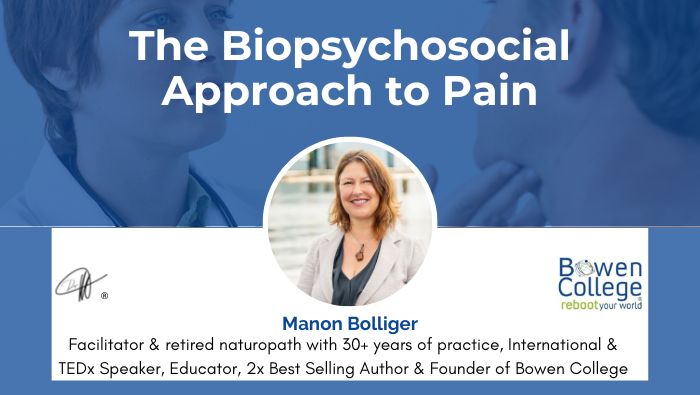As psychoneuroimmunology has offered a conceptual and biological understanding of the mind-body connections the concept of pain has evolved from purely biomedical to a multi-dimensional understanding. Several authors have categorized management and treatment approaches, which, backed by research, give us a broader definition and understanding of pain.
Two approaches, “biopsychosocial” and the “phenomenological perspective,” (as well as the consideration that, despite the increased perception and understanding of chronic pain phenomena, treatment solutions have yet to be explained by these or other process), will be discussed over the next several posts.
Engel (1977) introduced the term biopsychosocial as a broad construct to convey the importance of considering the interacting roles that biological/physical, psychological, and social factors play in illness and disease. J. Loeser, in his book Concepts of Pain (1982), distinguishes between four dimensions of pain experience: nociception, pain perception, suffering, and pain behavior (Loeser, 1982). In this post we’ll cover the first of these.
First, nociception, referring to nerve stimulation that conveys tissue damage information to the brain, accounts for the “bio” part of “biopsychosocial.” In the treatment of temporomandibular disorders (TMD), a biomedical reductionist approach limits focus to addressing nociceptive inputs, using traditional dental and medical treatments, such as splints and analgesic medications.
However, a 1:1 correlation between tissue damage and patients’ pain experience is rarely observed. To illustrate, reports of pain in the absence of tissue damage is common among psychiatric patients (Chaturvedi, 1987), and pain can persist after the healing of tissue in conditions such as causalgia and phantom limb syndrome. (Melzack, 1973)
The second through fourth dimension of the biopsychosocial approach will be covered in my next post.









